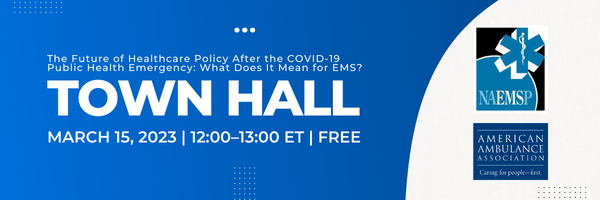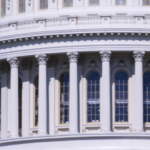Tag: COVID-19 coronavirus
CMS Publishes Final Rule COVID-19 Vaccination & Testing for Long Term Care Facilities
Please either or Join!
CMS | Updates to Coverage for COVID-19 Tests
The COVID-19 Public Health Emergency is to end on May 11, 2023. The ending of the Public Health Emergency may impact an individual’s coverage of COVID-19 tests. We encourage you to know these changes and share the New Consumer Fact Sheet on COVID-19 tests.
Consumer Fact Sheets:
- English – https://www.cms.gov/files/
document/covid-over-counter- test-coverage.pdf - Spanish – https://www.cms.gov/files/
document/covid-over-counter- test-coverage-spanish.pdf
Before May 11, 2023
If you have any type of health insurance, you can get up to eight over-the-counter tests per month with no out-of-pocket costs. Over-the-counter tests are available in most pharmacies and may also be available online for delivery.
After May 11, 2023
Laboratory tests for COVID-19 that are ordered by your provider will still be covered with no out-of-pocket costs for people with Medicare. Over-the-counter tests will still be available, but there may be out-of-pocket costs. Coverage of over-the-counter tests may vary by your insurance type, as described below.
What does this mean for Medicare Beneficiaries?
Generally, Medicare doesn’t cover or pay for over-the counter products. The demonstration that has allowed us to offer coverage for COVID-19 over-the-counter tests at no cost ends on May 11, 2023.
However, if you are enrolled in Medicare Part B, you will continue to have coverage with no out-of-pocket costs for appropriate laboratory-based COVID-19 PCR and antigen tests, when a provider orders them (such as drive-through PCR and antigen testing or testing in a provider’s office).
If you are enrolled in a Medicare Advantage plan, you may have more access to tests depending on your benefits. Check with your plan.
What does this mean for people with Medicaid or Children’s Health Insurance Program?
If you have coverage through Medicaid or the Children’s Health Insurance Program, you will have access to COVID-19 over-the-counter and laboratory testing through September 30, 2024. After that date, coverage of testing may vary by state.
What does this mean for people with Private Insurance?
If you have private insurance, coverage will vary depending on your health plan. However, private plans won’t be required by federal law to cover over-the counter and laboratory-based COVID-19 tests after
May 11, 2023. If your insurance chooses to cover COVID-19 testing, they may require cost sharing, prior authorization, or other forms of medical management.
Impact of Expiration of Public Health Emergency on May 11, 2023
Please either or Join!
AAA Comments on Pandemic and All-Hazards Preparedness Act (PAHPA)
March 28, 2023
The Honorable Bernie Sanders
Chair
Health, Education, Labor, & Pensions Committee
United States Senate
Washington, DC 20510
The Honorable Bob Casey
Health, Education, Labor, & Pensions Committee
United States Senate
Washington, DC 20510
The Honorable Bill Cassidy
Ranking Member
Health, Education, Labor, & Pensions Committee
United States Senate
Washington, DC 20510
The Honorable Mitt Romney
Health, Education, Labor, & Pensions Committee
United States Senate
Washington, DC 20510
Dear Chair Sanders, Ranking Member Cassidy, Senator Casey, and Senate Romney,
I am writing on behalf of the American Ambulance Association (AAA) to provide comments on policies the Committee should consider during the reauthorization of the Pandemic and All- Hazards Preparedness Act (PAHPA).
The members of the AAA provide mobile health care services to more than 75 percent of Americans. These essential mobile health care services include the local operation of the 9-1- 1 emergency medical services (EMS) system, as well as both emergent and non-emergency interfacility care transition ambulance services and transportation. Often ground ambulance service organizations are the first medical professionals to interact with individuals in need of a health care encounter. These organizations also serve as the health care safety net for many small communities, especially those located in rural areas where other providers and suppliers have reduced their hours of operation or left the community altogether. As such, these organizations play a critical and unique role in the country’s health care infrastructure.
Ground ambulance services are essential to our nation’s emergency medical response system, whether they are needed for a pandemic, natural disaster, or terrorist attack. The country’s EMS system requires federal support to ensure the availability of a well-trained workforce to provide these ground ambulance services. Ground ambulance services are also essential to protecting patient access to the right level of facility-based treatment options.
I. Support for Jurisdictional Preparedness and Response Capacity: Hospital Preparedness Program / ASPR activities financed through the general HHP budget
The AAA supports continued funding for the Hospital Preparedness Program (HPP). Our members have been working closely with the Assistant Secretary for Planning and Evaluation (ASPR) to find ways to direct some of the currently allocated HPP dollars to support ground ambulance services, particularly to address the workforce crisis and support expanded recruitment and training for emergency medical technicians (EMTs) and paramedics. During these discussions, it has become clear that more direct language authorizing the use of a specified portion of the HPP funds to support non-governmental and governmental ground ambulance services would allow ASPR to tackle this issue in a timelier manner.
Ground ambulance service organizations are facing crippling staffing challenges that threaten the provision of crucial emergency healthcare services at a time of maximum need. As we face a pandemic that waxes and wanes but does not end, our 9-1-1 infrastructure remains at risk due to these severe workforce shortages. The 2022 Ambulance Employee Workforce Turnover Study by the American Ambulance Association (AAA) and Newton 360 – the most sweeping survey of its kind involving nearly 20,000 employees working at 258 EMS organizations — found that overall turnover among paramedics and EMTs ranges from 20 to 30 percent annually with organizations on average having 30% of their paramedic positions open and 29% of their EMT positions.
The Congress and the President recognized the crisis and the FY23 Consolidated Appropriations called on ASRP to address this shortage by implementing a grant program to support non- governmental and governmental ground ambulance suppliers and providers through the HPP to address emergency medical services preparedness and response in light of the workforce shortage. While this language is helpful, the AAA recognizes that authorizing authority would provide a more sustainable approach to support an EMS workforce grant program.
Such a program would be consistent with the goals of ASRP. The FY24 HHS Budget in Brief highlights to goal of making “transformative investments in pandemic preparedness and biodefense across HHS public health agencies to enable an agile, coordinated, and comprehensive public health response to future threats and protect American lives, families, and the economy.” (HHS Budget in Brief 142). Ground ambulance medical services are an essential part of this preparedness and response goal.
Our nation’s ground ambulance service organizations, EMTs, and paramedics need Congress to address the EMS workforce challenges facing these front-line health care workers by including direct authority to use $50 million of the HPP funding to establish an EMS workforce grant program to address the crippling EMS workforce shortage, including in underserved, rural, and tribal areas and/or address health disparities related to accessing prehospital ground ambulance healthcare services, including critical care transport. The grants would be available to governmental and non-governmental EMS organizations to support the recruitment and training of emergency medical technicians and paramedics. The program would emphasize ensuring a well-trained and adequate ground ambulance services workforce in underserved, rural, and tribal areas and/or addressing health disparities related to accessing prehospital ground ambulance health care services.
This program is critically important to supporting the non-governmental and governmental ground ambulance service organizations that are the backbone of the country’s first emergency medical response system. The dollars would be used to provide grants directly to non- governmental and governmental ground ambulance service organizations to support training and retention programs, such as paying for initial training; providing tuition for community colleges EMT/ paramedic training courses; paying for required continuing education courses; supporting costs related to licensure and certification; and supporting individuals in underserved areas with transportation, child care, or similar services to promote accessing training.
II. Gaps in Current Activities and Capabilities: Gaps in HHS’ capabilities and what activities or authorities needed to fulfill intent of PAHPA and related laws
The most significant gap in PAHPA and HHS on preparedness and readiness activities is the exclusion of non-governmental entities from many of the federal programs targeted to first responders and EMS. This oversight results in more than one-third of local communities and their citizens not being able to access or benefit from the programs and funding that Congress intended be provided to support them. The AAA requests that the Committee recognize the decision-making authority to rely on non-governmental ground ambulance service organizations and provide access to programs that are currently available to governmental organizations.
During the pandemic, non-governmental local community ground ambulance organizations were not permitted to apply for or participant in many of the federal grant programs in place during the pandemic. As a result, these programs fell short of the goal of supporting preparedness and response activities at the local level.
The distinction between governmental and non-governmental appears to be based on outdated assumptions that first responders are only governmental or not-for-profit entities. This assumption ignores the decisions of state and local governments to contract with private ground ambulance service providers and suppliers to provide 911 or equivalent services. The federal government should respect these local decisions and support all ground ambulance services as first-responders and EMS.
One example of this problem is the FEMA public assistance grant program that reimbursed “first responders” for PPE and other expenses related to the response to COVID-19. When non- governmental (including not-for-profit) emergency ambulance service organizations sought direct reimbursement under the program, they were turned away. This differential treatment impacts communities across the United States, including those in Arkansas, California, Colorado, Florida, Georgia, Indiana, Louisiana, Massachusetts, Mississippi, Nevada, New York, Oregon, Texas, and Wisconsin, among others.
Appendix A includes list of some of the program the AAA has identified that should reviewed and updated to include non-governmental entities.
The solution to this problem is to use the more inclusive language that the Congress adopted in the Homeland Security Act of 2002 (6 U.S.C. § 101) on non-governmental and governmental entities within the definition of “emergency response providers.” This language provides access to all ground ambulance services and the communities they serve to funding when available to support preparedness and response activities.
III. Conclusion
On behalf of ground ambulance service organizations of the AAA, I want to thank you for the opportunity to provide comments on the PAHPA. We look forward to working with your team as you continue develop these policies.
Sincerely,
Randy Strozyk President
Appendix A: Grant Program for Review
ASSISTANCE TO FIREFIGHTERS GRANT (AFG)
http://www.firegrantsupport.com/afg/faq/08/faq_emer.aspx#q1
The grant program prohibits “for-profit” organizations from applying for grant funding.
STAFFING FOR ADEQUATE FIRE AND EMERGENCY RESPONSE (SAFER)
Retrieved from http://www.firegrantsupport.com/safer/faq/08/faq_elig.aspx#q1
Only fire departments and volunteer firefighter interest organizations are eligible for SAFER grants.
FEDERAL DISASTER RELIEF FUNDS
$45B to reimburse activities such as medical response, procurement of PPE National Guard deployment, coordination of logistics, implementation of safety measures, and provision of community services. According to FEMA, these funds will cover overtime and backfill costs; the costs of supplies, such as disinfectants, medical supplies and PPE; and apparatus usage. (The federal government will cover 75% of these costs.) NAEMT recommends FEMA’s new sheet on FEMA’s Simplified Public Assistance Application. In addition, you should consult with their state emergency managers to begin the process of being reimbursed. Eligible to apply: Public and some non-profit services.
Emergency Management Baseline Assessment Grant Program
The Emergency Management Baseline Assessment Grant (EMBAG) program provides non- disaster funding to support developing, maintaining, and revising voluntary national-level standards and peer-review assessment processes for emergency management and using these standards and processes to assess state, local, tribal, and territorial emergency management programs and professionals.
Nonprofit Security Grant Program
The Nonprofit Security Grant Program (NSGP) provides funding support for target hardening and other physical security enhancements and activities to nonprofit organizations that are at high risk of terrorist attack.
SIREN ACT
The Siren Act supports public and non-profit rural EMS agencies through grants to train and recruit staff, fund continuing education, and purchase equipment and supplies from naloxone and first aid kits to power stretchers or new ambulances.
ASPR – NATIONAL BIOTERRORISM HOSPITAL PREPAREDNESS PROGRAM
Eligibility requirements exclude for-profit private EMS.
PUBLIC SAFETY OFFICERS’ DEATH BENEFIT
Public Safety Officers’ Benefits Improvements Act of 2011 (S. 1696).
Added non-profits (but still excluded for profits) in the Public Safety Officers’ Benefit (PSOB) program. This legislation extended the federal death benefit coverage to paramedics and emergency medical technicians (EMTs) who work for a private non-profit emergency medical
services (EMS) agency and die in the line of duty and thank you for including the language of the Dale Long Emergency Medical Service Providers Protection Act (S. 385) in this new bill. Congress established the Public Safety Officer Benefit program to provide assistance to the survivors of police officers, firefighters and paramedics and emergency medical technicians in the event of their death in the line of duty. The benefit, however, currently only applies to those public safety officers employed by a federal, state, or local government entity and non-profits.
URBAN AREA SECURITY INITIATIVE (UASI) & METROPOLITAN MEDICAL RESPONSE SYSTEM (MMRS)
Retrieved from http://www.iowahomelandsecurity.org/Portals/0/CountyCoordinators/Grants/FFY09HSGPguida nce.pdf
Inclusion of Emergency Medical Services (EMS) Providers
DHS requires State and local governments to include emergency medical services (EMS) providers in their State and Urban Area homeland security plans. In accordance with this requirement, and as States, territories, localities, and tribes complete their application materials for the FY 2009 HSGP, DHS reminds our homeland security partners of the importance for proactive inclusion of various State, regional, and local response disciplines who have important roles and responsibilities in prevention, deterrence, protection, and response activities. Inclusion should take place with respect to planning, organization, equipment, training, and exercise efforts. Response disciplines include, but are not limited to: governmental and nongovernmental emergency medical, firefighting, and law enforcement services; public health; hospitals; emergency management; hazardous materials; public safety communications; public works; and governmental leadership and administration personnel.
INTEROPERABLE COMMUNICATIONS GRANTS
Retrieved from http://www.fema.gov/government/grant/iecgp/index.shtm
Eligibility and Funding
The Governor of each State and territory has designated a State Administrative Agency (SAA), which can apply for and administer the funds under IECGP. The SAA is the only agency eligible to apply for IECGP funds.
TECHNOLOGY TRANSFER PROGRAM (CEDAP)
Retrieved from http://ojp.usdoj.gov/odp/docs/cedap_factsheet_2008.pdf
Eligibility
Eligible applicants include law enforcement agencies, fire, and other emergency responders who demonstrate that the equipment will be used to improve their ability and capacity to respond to a major critical incident or work with other first responders. Awardees must not have received technology funding under the Urban Areas Security Initiative, or the Assistance to Firefighters Grants program since Oct. 1, 2006. Organizations must submit applications through the Responder Knowledge Base (RKB) website at www.rkb.us.
March 15 | NAEMSP/AAA Town Hall
NAEMSP/AAA Town Hall:
The Future of Healthcare Policy After the COVID 19 Public Health Emergency: What does it mean for Emergency Medical Services?
March 15th // 12-1pm ET
The COVID-19 pandemic has had a significant impact on the healthcare system and has highlighted the need for healthcare reform. As the world moves forward from the pandemic, it is likely that the future of healthcare will be shaped by the need for cost containment while continuing to shift the healthcare delivery system to a more value-based care model.
For the past three years, we have seen new innovative approaches to healthcare delivery including the rapid adoption of telemedicine, and it is expected that this trend will continue in the post-pandemic world. Reimbursement reform continues to be an important issue for Emergency Medical Services (EMS) systems, as it affects their ability to provide high-quality care to patients. Despite the disruption that we have seen for the last three years, the EMS industry has continued to push forward with new innovative approaches to service delivery including the expansion of community paramedicine programs and the implementation of alternative programs like the Emergency Triage, Treat, and Transport (ET3) model. During this session, the panelists will discuss the current healthcare landscape, including what innovative programs may be here to stay and what it means for EMS Systems.
Moderator
Jose G. Cabañas, MD, MPH, FAEMS
President, NAEMSP
Panelists
Jonathan Oberlander, PhD
Professor & Chair of Social Medicine and Professor of Health Policy & Management
University of North Carolina – Chapel Hill
Paul Hinchey, MD, MBA, FAEMS
COO for University Hospitals in Cleveland, Ohio
Larry McMillan, MHA
Chief Compliance Officer & ET3 Project Lead, Wake County EMS
Randy Strozyk, MBA
President, American Ambulance Association
Lekshmi Kumar, MD, MPH, FAEMS
Medical Director, Grady EMS
Melissa Kroll, MD
Washington University, St. Louis
CMS Releases New Guidance on Ending of the COVID-19 PHE
Please either or Join!
OMB PHE Update | May 11
|
|||
|
|||
|
CMS End of PHE Roadmap
CMS Prepares Providers and Suppliers for the End of the Public Health Emergency:
CMS Issues Updates on the End of Emergency Waivers and Flexibilities Issued during the PHE
By Kathy Lester, J.D., M.P.H.
Even though it appears that the Biden-Harris Administration will extend the COVID-19 Public Health Emergency (PHE) for at least another 90 days, CMS has begun the process of preparing for the termination of waivers and flexibilities that have been in effect during the pandemic. During the PHE, the American Ambulance Association has worked closely with CMS and Congress to make sure that ground ambulance services were prioritized and provided with waivers and flexibilities to support their integral role as a front-line medical response during the pandemic.
CMS announced its roadmap for the end of the PHE on August 18. The roadmap includes a summary of the policies that will terminate at the end of the PHE, but also notes that CMS intends to keep some policies in place even after the PHE ends. Examples of policies that will continue after the PHE is allowed to expire include certain morbidity and mortality reporting requirements on long-term care facilities and certain telehealth services expanded by Congress.
In its announcement, CMS indicated particular concern about patient safety. “As mentioned by Lee A. Fleisher, M.D.; Michelle Schreiber, M.D.; Denise Cardo, M.D.; and Arjun Srinivasan, M.D., in February 17, 2022, New England Journal of Medicine Perspective, ‘Safety has also worsened for patients receiving post-acute care, according to data submitted to the Centers for Medicare and Medicaid Services (CMS) Quality Reporting Programs…’”
As part of this announcement, CMS released a fact sheet detailing the current status of the Medicare waivers and flexibilities for ambulance providers and suppliers. Some of the policies highlighted in this fact sheet include:
- Vaccine Reimbursement Rates: CMS will continue to pay approximately $40 per dose for administering COVID-19 vaccines in outpatient settings for Medicare beneficiaries through the end of the calendar year that the COVID-19 PHE ends. Effective January 1 of the year following the year that the COVID-19 PHE ends, CMS will set the payment rate for administering COVID-19 vaccines to align with the payment rate for administering other Part B preventive vaccines. CMS plans to continue to pay a total payment of approximately $75 per dose to administer COVID-19 vaccines in the home for certain Medicare patients through the end of the calendar year that the COVID-19 PHE ends.
- Alternative Destination: CMS indicates that it will include this issue in future rulemaking.
- Treat in Place: CMS indicates that the waiver will end with the end of the PHE.
- Repetitive, Scheduled Non-Emergent Ambulance Transport (RSNAT) Prior Authorization: CMS notes that it has already returned to the full model operations including post-payment reviews of claims submitted during the PHE.
- Signature Requirements: Absent indications of potential fraud and abuse, CMS will not review claims for dates of service during the COVID-19 PHE for compliance with the signature requirements.
- Appeal Flexibilities: CMS will allow some of the flexibilities related to the timing of appears to continue consistent with existing authority for appeals once the PHE ends.
The AAA will continue to monitor the PHE and any changes in the waivers and flexibilities specific to ground ambulance services. We encourage members to reach out to our team if concerns or questions arise as CMS winds down the PHE.
New EEOC Guidance on COVID-19 Testing
EEOC Issued New Guidance on Employer Mandatory COVID-19 Testing Policies
On July 12, 2022, the Equal Employment Opportunity Commission (EEOC) updated its guidance, What
You Should Know About COVID-19 and the ADA, the Rehabilitation Act, and Other EEO Laws, which
impacted several long-standing COVID-19-related policies. The most significant policy change in the
latest guidance was related to employer mandatory COVID-19 testing. The updated guidance is not likely
to significantly impact EMS employer testing practices for field personnel, but could for those who work
in administrative or non-patient facing roles.
In the latest guidance, the EEOC changed its previous position that employers could generally require
COVID-19 testing for most employees. The EEOC had previously taken the position that it believed that
COVID-19 viral testing was per se, job-related and consistent with business necessity, regardless of the
employer type. Under the latest guidance, the EEOC is now stating that employers will need to more
closely analyze whether viral testing is job-related and consistent with business necessities. In doing so,
employers should utilize any of these factors:
The Center for Disease Control (CDC) level of community transmission.
The vaccination status of employees.
The degree of breakthrough infections are possible for vaccinated workers.
The transmissibility of current variants.
The possible severity of illness from a current variant.
In most instances, EMS employers who require COVID-19 viral testing for field employees for ongoing,
symptomatic, or return to work reasons, are likely to meet the job related and consistent with business
necessity requirement. However, for those employees who are in non-patient-facing roles, it will be far
more difficult to justify mandatory COVID-19 testing and employers should reconsider their position on
mandatory testing.
The guidance also included updates to clarify the timeline factors to consider when handling reasonable
accommodation exceptions for vaccinations and how there could be a reasonable pandemic-related
delay. However, they acknowledged that this is likely less impactful at this point in the pandemic.
Additionally, the guidance highlighted that employers are not under an obligation to engage an
employee who has a serious health condition if the employee has not requested an accommodation
from vaccination.
Many EMS employers are currently required to mandate COVID-19 vaccinations for employees who may
enter or interact with the patients or staff of a covered healthcare facility unless they have a covered
religious or disability-related exemption. After nearly two years of the pandemic and the availability of
COVID-19 vaccinations, those employees who wish to be vaccinated would have done so by now. Those
who remain unvaccinated are doing so by choice.
If you have any questions or concerns regarding the updated guidance or any COVID-19 related
workplace practice, be sure to contact the American Ambulance Association for assistance at
hello@ambulance.org.
June 8 | FICEMS Virtual Meeting
2022 SESSION
Wednesday, June 8, 2022 1:00 p.m. – 3:45 p.m. Virtual Meeting Washington, DC
General Meeting1:00-1:05 Welcome, Introductions, Opening Remarks Jonathan Greene, Deputy Asst. Secretary for Preparedness & Response Director, Office of Emergency Management & Medical Operations FICEMS Chairperson Gam Wijetunge, Director, NHTSA OEMS Director of the Office of EMS, NHTSA Elizabeth Fudge Supervisory Program Analyst, Health Readiness Policy & Oversight Theresa “Tee” Morrison-Quinata EMS for Children Branch Chief, Maternal & Child Health Bureau Division of Child, Adolescent, & Family Health 1:20 Assistant Secretary for Preparedness & Response Jonathan Greene Deputy Assistant Secretary & Director, Office of Emergency Management & Medical Operations
1:25 Indian Health Services Darrell LaRoche Director, Office of Clinical & Preventive Services
1:30 Centers for Disease Control & Prevention Christine “Chris” Kosmos Director, Division of State & Local Readiness Center for Emergency Preparedness & Response
1:35 Centers for Medicare & Medicaid Services CAPT. Skip Payne Director, Emergency Preparedness & Response Operations 1:40 Countering Weapons of Mass Destruction Office Pritesh Gandhi, M.D. Chief Medical Officer, EMS Program
1:45 United States Fire Administration Richard Patrick Director, National Fire Programs Directorate 1:50 National Highway Traffic Safety Administration Nanda Srinivasan Associate Administrator, Research & Program Development 1:55 Public Safety & Homeland Security Bureau David Furth, J.D. Deputy Chief, Office of the Bureau Chief 2:00 State EMS Directors Update Steve McCoy EMS Bureau Florida Department of Public Health Kate Elkins EMS Specialist, NHTSA OEMS 2:10 COVID-19 First Responder Deaths Dave Bryson EMS Specialist, NHTSA OEMS 2:15 National 911 Program Update Brian Tegtmeyer National 911 Program Coordinator 2:20 NEMSIS Update Eric Chaney EMS Specialist, NHTSA OEMS 2:25 National Roadway Safety Strategy – Post Crash Care Gam Wijetunge Director, NHTSA OEMS
Diane Pilkey, DHHS HRSA | Max Sevareid, NHTSA OEMS
2:35 EMS Data Standards & Exchange Subgroup Rachel Abbey, DHHS ONC | David Millstein, DHS USFA 2:40 EMS Systems Integration & Preparedness Subgroup Tee Morrison-Quinata, DHHS HRSA | Gam Wijetunge, NHTSA OEMS 2:45 Workforce & Safety Subgroup Greg Williams, DHS USFA | Dave Bryson, NHTSA OEMS 2:50 Education & Training Subgroup Michael Stern, DHS USFA | Clary Mole, NHTSA OEMS
3:25-3:30 Public Comment |
Infection Prevention and Control for the EMS/911 Workforce: Public Comment Requested
Draft Report on Infection Prevention and Control for the EMS/911 Workforce Released: Public Comment Requested
From EMS.gov on April 12, 2022
| The draft report for the technical brief on Infection Prevention and Control for the Emergency Medical Services (EMS)/911 workforce has been released by the Evidence-based Practice Center (EPC) Program at the Agency for Healthcare Research and Quality (AHRQ). The draft report is available for review and feedback through April 22, 2022 on Effective Healthcare’s website.
The technical brief summarizes the latest evidence on infectious pathogen exposure among the EMS/911 workforce and offers recommendations for the prevention, recognition, and control of infectious diseases and other related exposures that may be acquired in occupational settings. The AHRQ is requesting feedback from the community to improve the final technical brief. The agency values feedback and will consider all comments received.
AHRQ is a government agency that produces evidence-based guidance to improve the quality of healthcare delivery. It coordinates these efforts with partners in the field to ensure the evidence is understood and put into practice. For more information on the EPC Program, visit here. This project is supported by NHTSA’s Office of EMS, which strives to reduce death and disability by providing leadership and coordination to the EMS community in assessing, planning, developing, and promoting comprehensive, evidence-based emergency medical services and 911 systems. |
DOL COVID-19 Exposure Rule-Making
The United States Department of Labor (US DOL) has published a notice of intent to partially reopen the rule-making process to permit additional comment and a public hearing on certain aspects of the OSHA Emergency Temporary Standard for Healthcare employers which was originally published in June 2021. OSHA is seeking further input from stakeholders as they develop a final standard. The public hearing will begin on April 27, 2022.
The agency is reopening the rulemaking record to allow for new data and comments on topics, including the following:
- Alignment with the Centers for Disease Control and Prevention’s recommendations for healthcare infection control procedures.
- Additional flexibility for employers to permit less prescriptive requirements
- Removal of scope exemptions.
- Tailoring controls to address interactions with people with suspected or confirmed COVID-19.
- Employer support for employees who wish to be vaccinated.
- Limited coverage of construction activities in healthcare settings.
- COVID-19 recordkeeping and reporting provisions.
- Triggering requirements based on community transmission levels.
- The potential evolution of SARS-CoV-2 into a second novel strain.
- The health effects and risk of COVID-19 since the ETS was issued.
OSHA made it clear that it is not proposing mandatory COVID-19 vaccination for healthcare workers. However, they are seeking comments regarding how it could help employers further support healthcare worker employees in their vaccination and boosting efforts. This could include paid leave, including travel time, for those seeking vaccinations or boosters.
The notice in the Federal Register had a slightly more relaxed tone as many areas in the country have seen a significant drop-off in cases. If you are interested in submitting comments, you can do so electronically at www.regulations.gov. If you wish to attend the video-based public hearing, you must file a notice of intention to appear with the US DOL within 14 days of the notice being officially published in the Federal Register.
If you have any questions about your current obligations under the OSHA rules, please email the AAA at hello@ambulance.org.
HHS PRF | EMS Funding Letter to Secretary Becerra
March 24, 2022
The Honorable Xavier Becerra
Secretary of Health and Human Services
Department of Health and Human Services
200 Independence Avenue, SW
Washington, DC 20201
Dear Secretary Becerra:
Ground ambulance service organizations and fire departments continue to struggle financially from the enduring economic effects of the COVID-19 public health emergency (PHE). Our respective members face sharp increases in the costs of fuel, equipment, medical supplies, and staffing as we deal with a severe shortage of paramedics and emergency medical technicians (EMTs) which has been an issue for years but exacerbated by the pandemic. We implore you to help ensure communities around the country have access to 9-1-1 emergency and non-emergency ground ambulance services through the remainder of the PHE and beyond with an infusion of $350 million from returned and/or unspent money in the Provider Relief Fund (PRF).
We greatly appreciate the funding that ground ambulance service organizations and fire departments have already received from the PRF. The funds have been a lifeline for many of our respective members and their ability to continue to serve their communities. However, as the Phase 4 distribution of funds demonstrated, more funding is needed for ground ambulance services. Our members indicate the funds they received in Phase 4 covered approximately 50% of their lost reimbursement and increased costs from July 1, 2020, to March 31, 2021, whereas previous distributions were closer to 88%. We therefore respectfully request an immediate distribution of $350 million or 10% of the annual Medicare expenditure on ground ambulance services.
We request that the funds be distributed in a similar manner as the Tranche 1 distribution from the PRF. The automatic, across-the-board deposit of funding was especially helpful for small and rural ground ambulance service organizations. These rural organizations provide care in underserved areas and are often daunted even by an abbreviated application process. To ensure equity for all communities, we support universal direct deposit.
Additionally, we encourage HHS to make these payments based on the National Provider Identification (NPI) number of the ground ambulance service organization or fire department rather than Tax ID Number (TIN). In the case of moderate and large cities, many municipal departments may share a TIN while maintaining distinct NPIs. Providing these payments according to TIN may unintentionally comingle funds intended for different departments such as fire departments, public health departments, and local government-run hospitals or clinics.
The American Ambulance Association (AAA), International Association of Fire Chiefs (IAFC), International Association of Fire Fighters (IAFF), National Association of Emergency Medical Technicians (NAEMT), and National Volunteer Fire Council (NVFC) represent the providers of vital emergency and non-emergency ground ambulance services and the paramedics, EMTs and firefighters who deliver the direct medical care and transport for every community across the United States.
Our members take on substantial risk every day to treat, transport, and test potential COVID-19 patients, and play a vital role in providing vaccinations to individuals in their homes. Ground ambulance service organizations and fire departments, however, urgently need the additional
$350 million to help offset the increased costs and lower reimbursement resulting from our vital response to the pandemic.
Thank you in advance for your consideration of this request.
Sincerely,
American Ambulance Association
International Association of Fire Chiefs
International Association of Fire Fighters
National Association of Emergency Medical Technicians
National Volunteer Fire Council
Student Loan Forgiveness for Frontline Health Workers Act (S. 3828) Introduced
This week, Senator Sheldon Whitehouse (D-RI) along with Senator Alex Padilla (D-CA), introduced the Student Loan Forgiveness for Frontline Health Workers Act (S. 3828), which provides loan forgiveness to individuals working in frontline healthcare responding to the Covid-19 pandemic. The legislation broadly defines healthcare workers and includes those who work in both public and private EMS. It provides relief to those who participate in both Federal student loans and private loans. We are very pleased to see the introduction of this legislation as it represents the kind of broad-based coverage for both governmental and non-governmental EMS that we have been advocating for. The legislation specifically covers paramedic certification programs that are accredited as part of CoAEMSP which requires college affiliation and makes them eligible for relief as federal student loans. The bill has broader standards than the current Public Safety Loan Forgiveness program. S. 3828 covers front-line healthcare workers regardless of their length of service as long as they are providing Covid healthcare-related services and specifically covers “an emergency medical services worker who responds to health emergencies or transports patients to hospitals or other medical facilities”. In addition, the student loan forgiveness for those working in EMS, would be exempt from inclusion in that individual’s taxable income.
The AAA supports this legislation and applauds Senator Whitehouse and Senator Padilla for their efforts to assist our frontline healthcare workers.
HHS IEA | COVID-19 Update for March 21, 2022
|
HHS Office of Intergovernmental and External Affairs COVID-19 Update for
March 21, 2022 |
|
|
|
|
|
Marvin B. Figueroa, Director
U.S. Department of Health and Human Services
Intergovernmental and External Affairs 200 Independence Ave., S.W. Washington, D.C. 20201 |
|
|
Brave of Heart Scholarship
The Brave of Heart Fund was founded in May 2020 by the Foundations of Cigna and New York Life and administered by E4E Relief. It was established to provide charitable grants and emotional support services to families of frontline healthcare workers, volunteers, and support staff whose lives were lost in the fight against COVID-19.
Now, the Brave of Heart Fund continues to honor the hard work and sacrifice of healthcare workers and their families via scholarship funding for their spouses, domestic partners, and children.
Applications are now being accepted online.
Up to $25,000.00 annually is available in scholarship funding, depending on an eligible applicant’s academic focus, student status, and other criteria.
Eligible Applicants
- Must be a spouse, domestic partner, or child of a healthcare worker, volunteer, or support staff whose life was lost in the fight against COVID-19.
- Must plan to enroll in accredited studies at the undergraduate or graduate levels, in community college, or in vocational and technical schools.
- May be non-traditional students and individuals enrolled in part-time coursework.
- Do not have to be previous recipients of Brave of Heart Fund grants; recipients of previous grant funding are also still eligible.
Application Deadline
For Fall 2022 semester scholarships:
April 20, 2022
3:00PM Central Standard Time
House Energy & Commerce Hearing on COVID-19 Frontlines
On March 2, the House Energy and Commerce Subcommittee on Oversight and Investigations held a hearing on “Lessons from the Frontline: COVID-19’s Impact on American Health Care.” Subcommittee Chair Diane DeGette (D-CO) and members Lorie Trahan (D-MA) and Tom O’Halleran (D-AZ) referenced the important role of EMS during their comments. The AAA submitted written comments for the hearing record requesting that the Subcommittee help address the EMS workforce shortage, access to grant funding for all EMS provider types and stability with funding for ground ambulance services. Here is a link should you want to watch a recording of the hearing.
NAEMT | Quick Survey on EMS Utilization of COVID-19 Waivers
EMS Utilization of COVID-19 Waiver Survey
|
|
|
OSHA Withdraws the Mandatory Vaccination & Testing Emergency Temporary Standard (ETS)
Please either or Join!




















